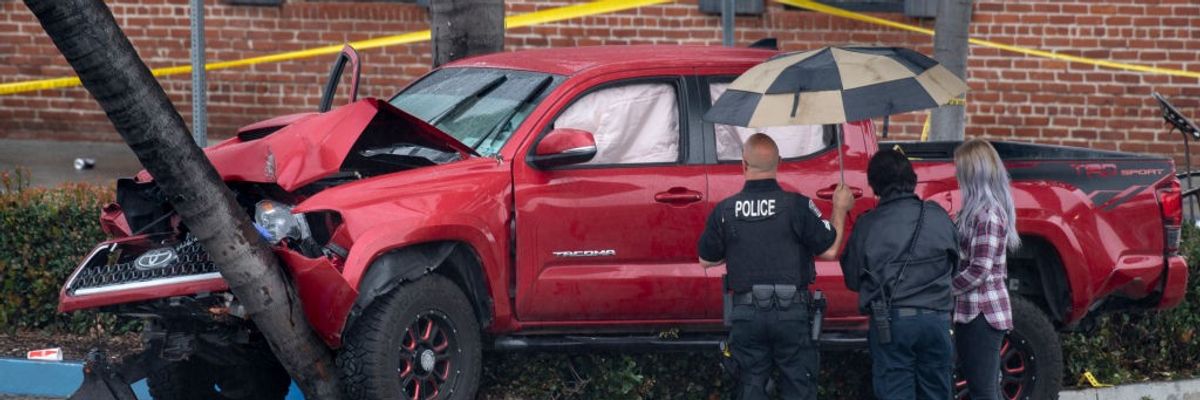California musician Ryan Nealon has only fleeting memories of his mother, Terri. He remembers they shared a passion for music and she loved to make him laugh. But his most vivid memory involving his mom was the New Year’s Day when he was five years old and his Aunt Peggy told him she was never coming home again. As Terri celebrated the new year with close friends, a drunk driver side-swiped her car, killing her instantly.
Ryan is not alone. A new study found that nearly half of Americans have experienced a crash that involved an impaired driver, or know someone who has. Drunk-driving kills someone in the U.S. every 39 minutes. When we account for people who are injured, that number soars to a new victim every 79 seconds.
The holiday season is a time of particular concern, since drunk driving crashes increase as much as 40 percent. Even modest amounts of alcohol can have very real physical effects. From the moment it hits the bloodstream, alcohol impacts the central nervous system, impairing muscle coordination and the ability to reason. In most states, it is illegal to drive with a blood alcohol concentration (BAC) of .08, yet drivers with a lower BAC level can still be dangerously impaired.
From November 1 to January 1, there will be more than 21 million chances you will encounter a drunk driver on the road. On “Blackout Wednesday,” the day before Thanksgiving, the roads are so dangerous that drunk driving accounts for 41% of all traffic deaths.
If these numbers are shocking, stories like Ryan's serve as a bleak reminder that behind each statistic is someone’s parent, sibling, child, spouse or friend. This holiday season, hundreds of people will go out shopping, to a gathering of friends and family or to a religious service, but never make it there. Safe driving solutions have never been more critical.
Driving impaired due to alcohol and other drugs is a violent crime, one that puts us all at risk.
Beginning in the 1980s, organizations such as Mothers Against Drunk Driving (MADD) have helped cut deaths from drunk driving in half. But that success is slipping away. Since 2019, drunk driving crashes have increased by 31 percent, another unwelcome side effect of the COVID-19 pandemic as alcohol consumption skyrocketed. Unlike most aspects of American life that have returned to their pre-pandemic “norm,” drunk driving has not receded. In fact, a recent survey by The Harris Poll found that more than a third of Americans admit to having driven a car after consuming alcohol or other drugs when they weren't entirely sure it was safe for them to get behind the wheel – with no statistical differences among generations.
This trend is especially difficult for people who’ve lost a loved one to the violence of crashes involving alcohol or other drugs. Instead of spending time with her daughter Alexis during the holidays, for example, Joan Robinson visits her at the cemetery. In 2020, the 17-year-old Louisiana resident was on her way home from work when a drunk driver slammed into her car. With a blood alcohol level nearly three times the legal limit in most states, the driver was going more than 30 miles above the speed limit when he hit and killed Alexis.
Adding to the tragedy, impaired drunk driving is completely preventable. Over the years, coordinated campaigns have meaningfully shifted laws and social norms around drunk driving. While there is more work to do to raise awareness of the dangers of driving after consuming cannabis, today, four out of five of Americans say they would feel comfortable trying to stop someone who consumed alcohol or drugs from driving. And yet, 43 percent still have gotten into a car with a driver who had consumed alcohol or other drugs when they weren’t certain the driver could drive safely.
Ashley Bonus also knows firsthand how deadly drunk driving can be. In 2012, her sister, 28-year-old Stacy Gammons-Ankerfelt, left her Washington state home to buy school supplies for her classroom and never returned. On her way to the store, a driver who was under the influence violently crashed into her car, throwing her more than 30 feet into the air. Stacy suffered a traumatic brain injury from the crash and died a month later. Since that day, Ashley says that grief has overshadowed every holiday and milestone in her life.
Driving impaired due to alcohol and other drugs is a violent crime, one that puts us all at risk. Understandably, 84 percent of Americans worry that they or someone they love will be hit by an impaired driver, with no statistical differences across race, region of the country, or parental status. The good news is that real solutions are finally within reach. A coalition of organizations is working to promote more effective laws, new technology and evidence-based prevention programs with the goal of eliminating the need to worry about impaired driving.
As a mother of a teenage driver, I urge all Americans to celebrate responsibly this holiday season. Make sure that you have a safe way home with a designated driver, a ride-share app or taxi or public transportation. Ensure everyone wears a seatbelt. Don’t let friends or family members who’ve been drinking or taking drugs get behind the wheel of a car. And take MADD’s pledge to be available to help others get home safely, too. If we work together, no matter where you’re going this holiday season, you will be able to ToGetThere safety. We all will, together.

